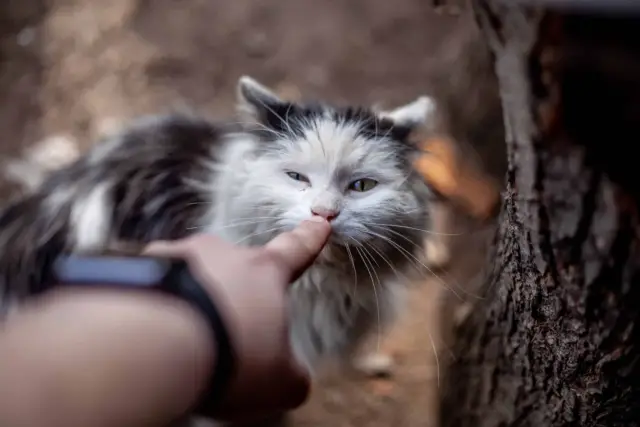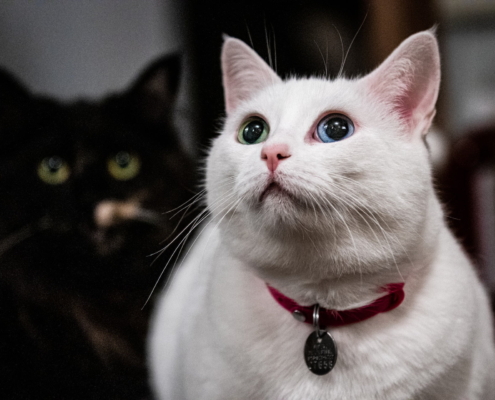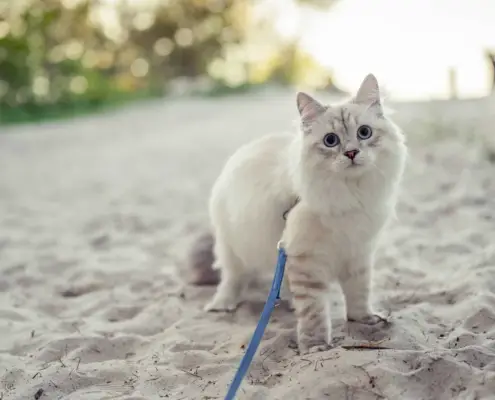
Cats have been beloved companions of humans for centuries, bringing joy, comfort, and companionship to countless households. However, behind the scenes, there is a fascinating world of cat breeding that plays a crucial role in shaping the diverse array of cat breeds we see today. Cat breeding is not just about creating unique and beautiful feline companions; it serves a higher purpose. In this article, we delve into the history, reasons, types, challenges, and ethical considerations of cat breeding, as well as its impact on cat health and welfare. By understanding the purpose of cat breeding, we can gain a deeper appreciation for the incredible world of feline genetics.
The History of Cat Breeding
The practice of cat breeding dates back thousands of years. Ancient civilizations, such as the Egyptians, revered cats and selectively bred them for specific traits. The Egyptians believed that cats possessed mystical qualities and considered them sacred animals. They selectively bred cats with unique physical characteristics, such as the striking appearance of the Egyptian Mau and the hairless Sphynx breed. These early breeding efforts laid the foundation for the cat breeds we know today.
The Reasons for Cat Breeding
Cat breeding serves a variety of purposes, each driven by different motivations. One primary reason for cat breeding is to create new breeds with distinct physical traits and personalities. Breeders carefully select cats with desirable traits and mate them to produce offspring that embody these characteristics. Additionally, cat breeding is undertaken to preserve and protect specific breeds that may be at risk of extinction. By breeding cats within a breed, breeders maintain the breed’s unique traits and prevent the dilution of its genetic pool.
The Different Types of Cat Breeds
Cat breeds can be broadly classified into two categories: natural breeds and hybrid breeds. Natural breeds, also known as landrace breeds, are the result of natural selection and adaptation to specific environments. They have evolved over time without human intervention. Examples of natural breeds include the Maine Coon, known for its large size and thick fur, and the Siamese, recognized for its striking blue eyes and color-point pattern. Hybrid breeds, on the other hand, are the outcome of intentional crossbreeding between different breeds. They aim to combine the best traits of two or more breeds to create a new and unique breed. Popular hybrid breeds include the Bengal, a cross between a domestic cat and an Asian leopard cat, and the Savannah, a cross between a domestic cat and a serval.
The Role of Cat Breeding in Preserving and Improving Breeds
Cat breeding plays a vital role in preserving and improving cat breeds. Breeders meticulously study the genetics of their cats, paying close attention to traits like appearance, temperament, and health. By selectively breeding cats with desirable traits, breeders can enhance and refine a breed’s characteristics over time. This process, known as selective breeding, helps maintain breed standards and ensures that the breed remains true to its original purpose and appearance. Breeders also conduct health screenings and genetic testing to reduce the prevalence of inherited diseases within a breed. Through careful breeding practices, breeders contribute to the overall health and longevity of cat breeds.
The Ethical Considerations of Cat Breeding
While cat breeding has its merits, it is essential to address the ethical considerations associated with the practice. Some critics argue that breeding cats solely for aesthetic purposes can lead to an overemphasis on appearance and neglect of health and genetic diversity. Inbreeding, a common practice in cat breeding, can lead to health issues and genetic abnormalities if not carefully managed. Additionally, the demand for certain breeds fuels a market where unscrupulous breeders prioritize profit over the well-being of the cats. Responsible breeders, however, prioritize the health and welfare of their cats above all else. They adhere to ethical breeding practices, ensure proper socialization of kittens, and provide lifetime support for the cats they breed.
The Challenges and Responsibilities of Cat Breeding
Cat breeding is not without its challenges and responsibilities. Breeders invest significant time, effort, and resources in managing their breeding programs. They must have a deep understanding of feline genetics, health, and behavior. Breeders also face the responsibility of finding suitable homes for the kittens they produce, ensuring that the cats will be well cared for throughout their lives. Additionally, breeders must navigate various legal and regulatory requirements, as well as the ethical dilemmas associated with breeding practices. Responsible breeders are committed to continuously learning and improving their breeding programs to ensure the long-term well-being of the cats they breed.
The Impact of Cat Breeding on Cat Health and Welfare
Cat breeding has both positive and negative impacts on cat health and welfare. On one hand, responsible breeding practices contribute to the overall health and vitality of cat breeds. By conducting health screenings and genetic testing, breeders can identify and avoid breeding cats with hereditary health issues, reducing the prevalence of such conditions within a breed. On the other hand, unethical breeding practices, such as over-breeding and neglecting proper healthcare, can lead to the proliferation of genetic disorders and compromised welfare. It is crucial to support responsible breeders who prioritize the health and welfare of their cats and work towards improving the overall well-being of cat breeds.
The Future of Cat Breeding
As our understanding of feline genetics and health continues to evolve, the future of cat breeding holds great promise. Advances in genetic testing and research will enable breeders to make more informed breeding decisions, reducing the risk of inherited diseases and improving overall cat health. Responsible breeding practices, guided by a commitment to the well-being of the cats, will become increasingly prevalent. Additionally, there is growing recognition of the importance of adopting cats from shelters and rescues as a means to combat overpopulation and provide loving homes for cats in need. The future of cat breeding lies in a balanced approach that combines responsible breeding with adoption efforts to ensure a bright future for all cats.
Conclusion
Cat breeding is a complex and multifaceted endeavor that goes beyond creating beautiful feline companions. It serves the purpose of preserving and improving cat breeds, contributing to their health and vitality while respecting ethical considerations and promoting responsible breeding practices. By recognizing the historical significance, understanding the reasons behind cat breeding, and acknowledging the challenges and responsibilities it entails, we can appreciate the incredible world of feline genetics. Through responsible breeding and a commitment to the health and welfare of cats, we can ensure a future where cats continue to bring joy and companionship to our lives.
If you enjoyed my article, I would appreciate you sharing it with your network.

Sima Ndlebe
Sima writes for CatBuzz. He is interested in Cats, Health and Fitness, and Entrepreneurship.
Published: 27 May 2024



